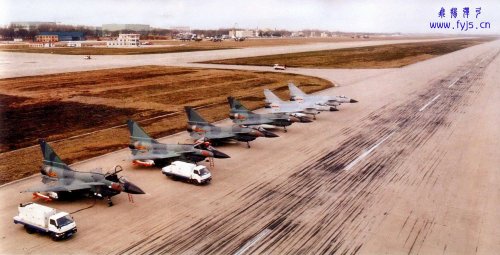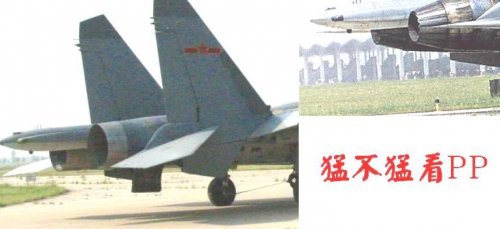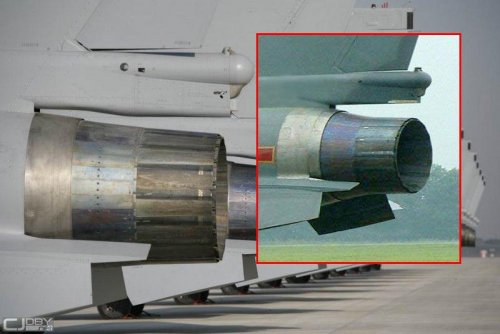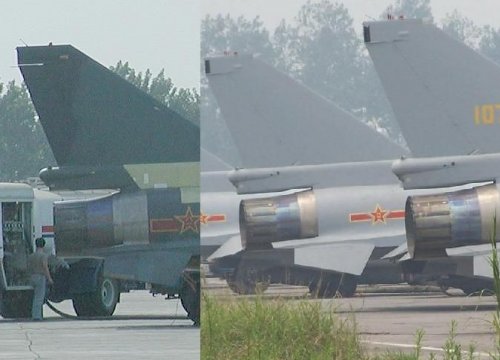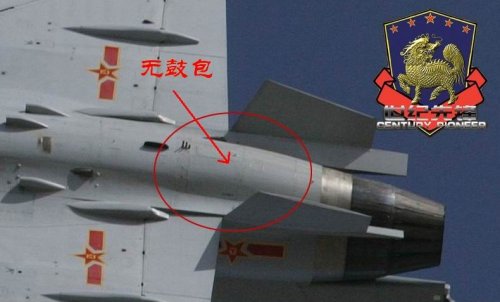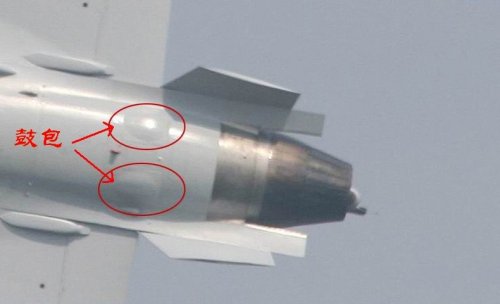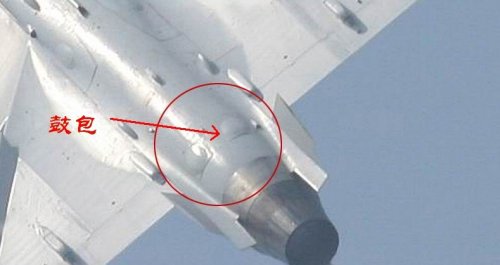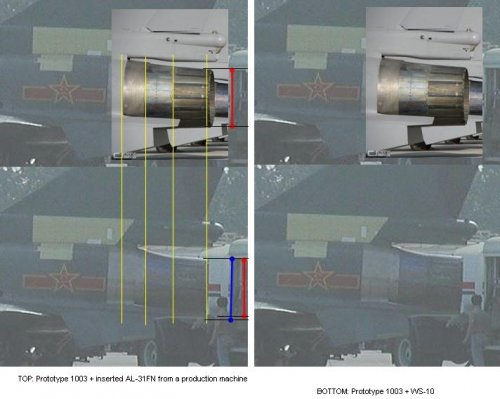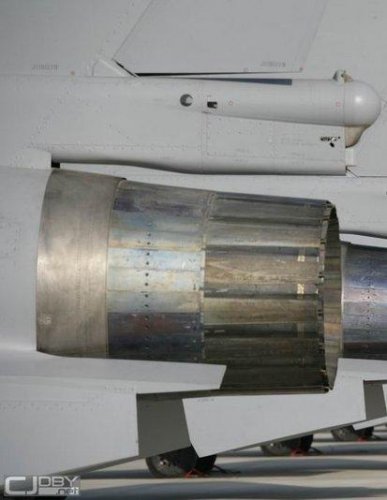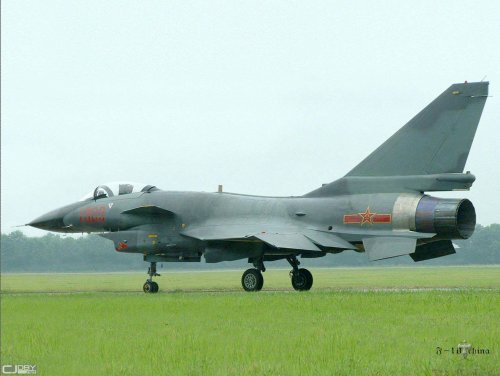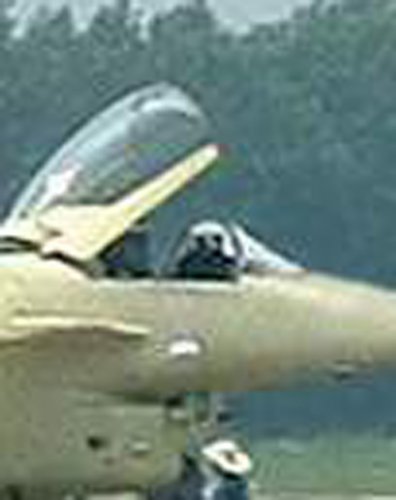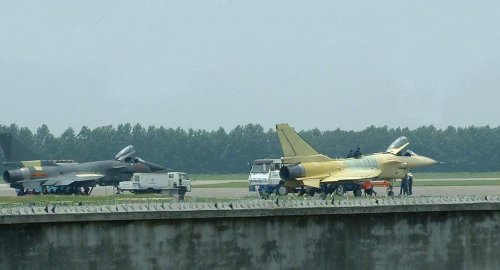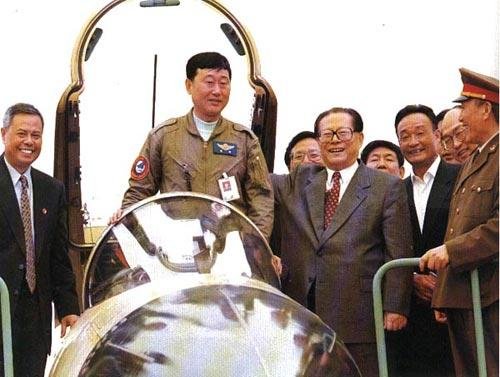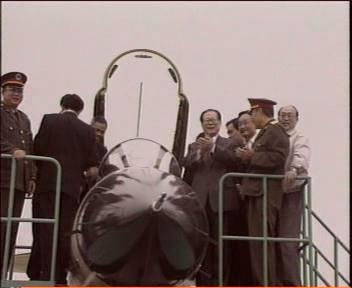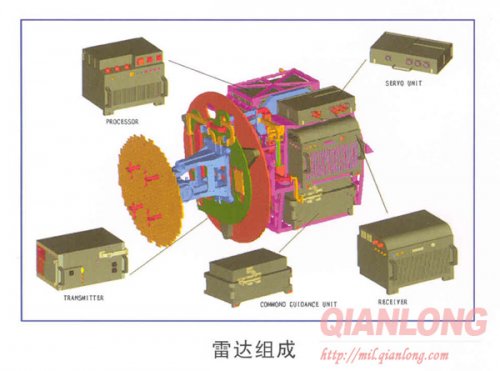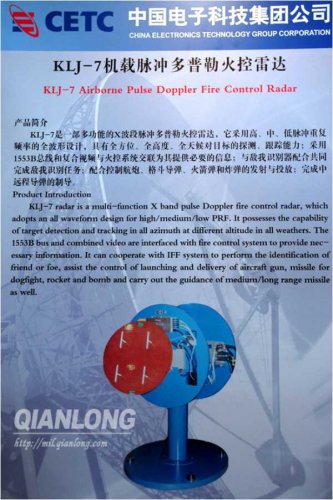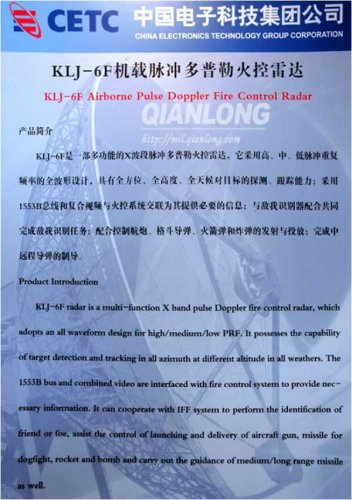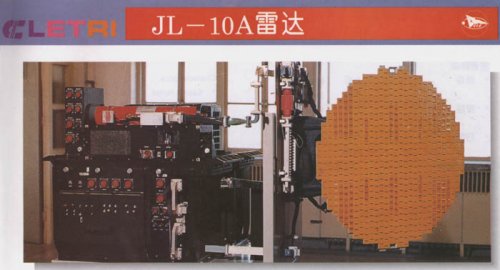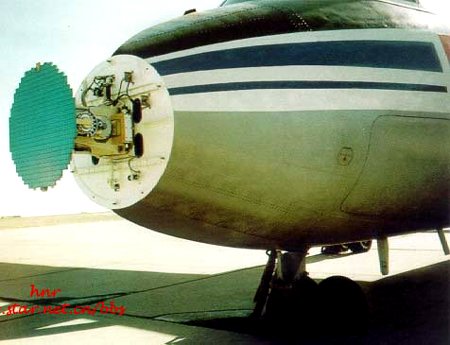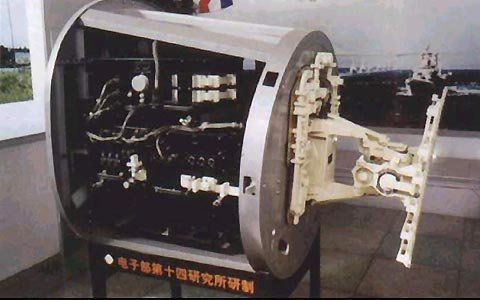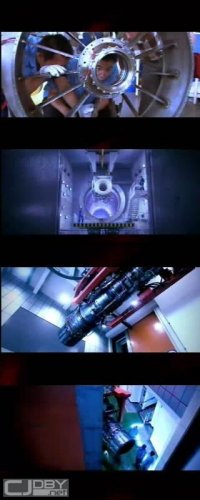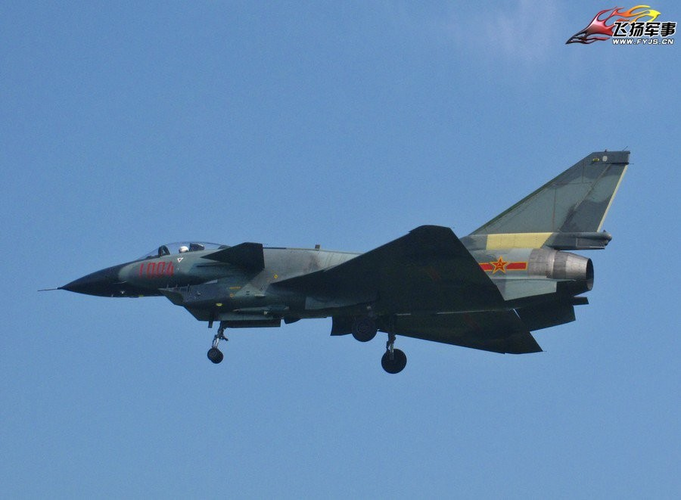- Joined
- 2 January 2006
- Messages
- 3,828
- Reaction score
- 5,136
Hi guys … I just call for help as I once again have a problem this time regarding the J-10’s powerplant !
During last few weeks after the unveilance of the J-10 a new “fact” seems to have been accepted regarding the WS-10 powering at least the early prototypes esp. the picture showing several prototypes in a row !
But let me start with a “history as we accepted it until now” !!
My first idea to that was: We’ve seem the WS-10 on a J-11 and it shows clearly recognisable differences to an AL-31 – regardless on the Su-27 or J-10 – as it has a completely different nozzle. Now some – even some of the well informed members at several other forums – state, that the original WS-10 has some very close similarities to the AL-31FN and can only be distinguished by a slightly longer/wider metal ring around the rear section. Latest suggestions say that on earlier prototypes – with that ring there are also some strange “bubbles” on top of the air-brakes.
My first argument against this theory – esp. as I didn’t find any source on that – was:
Even if I can't get a closer look "inside" it's quite possible to distinguish a specific engine on a military plane by a look at its nozzle: like a F100 powered F-16 from a F110 powered one; the same especially for the first RB.199 powered Typhoons from the serial EJ.200 powered. And so on ! Every modern engine has its typical external characteristics ... and no two engines especially from two very different manufactures look so similar like these Shenyang WS-10A and the Saturn AL-31FN exhausts !
If the J-10 uses a WS-10 it will surely show a different nozzle.
Therefore I still ask myself 2 questions: ???
1) If the WS-10A is actually based on the core of the CFM.56 as reported and we assume that the engine shown on the J-11/WS-10-testbed is then a "prototype" with not the final arrangement ... would it be possible to adopt the AL-31's nozzle ???
2) Otherwise if both engines do use the same nozzle and are only distinguishable by the length of the metal ring ... could it be that the WS-10 then is more related to the AL-31F as I thought before (like the WS-13 to the RD-93) ???
Therefore IMO the differences are much smaller than between an F100-PW-200 in an F-15 and a late F100-PW-229 in an F-16.
... what led me to three conclusions:
1) this is not the WS-10A !!!! ... or ...
2) both engines are closely related ... or do at least use the same exhaust design ! (Why; I don't know)
3) both engines are the same (= AL-31FN's) ... maybe from another production block and therefore show minimal external changes ... changes on the rear part of the airframe and not on the engine !
During last few weeks after the unveilance of the J-10 a new “fact” seems to have been accepted regarding the WS-10 powering at least the early prototypes esp. the picture showing several prototypes in a row !
But let me start with a “history as we accepted it until now” !!
Although it was believed to be powered initially by a 27,560lb/12,500kg thrust AL-31FN turbofan, a modified AL-31F which itself powers Su-27/J-11, Russia reportedly had denied China the license to produce the engine locally. As the result, an indigenous engine (WS-10A) may be fitted later during the serial production.
…
The development of J-10 has not been smooth. A full-scale mock-up was built in 1993. High-speed taxing occurred in 1996. The first prototype was set to fly in 1996, powered by a newly designed WS-10 turbofan based on the CFM56 engine core technology. However the development of this indigenous engine suffered some serious difficulties and thus the rear fuselage and engine intake were forced to be redesigned in order to accommodate an alternative AL-31FN engine imported from Russia. After a 15-month delay, the first prototype (01) made its maiden flight on March 23, 1998, two years behind the schedule.
…
China also signed a $300m contract in August 2005 with Russia to acquire 100 improved AL-31FN-M1 turbofan engines with bigger thrust (132.4kN) and TVC in both pitch and yaw, a design similar to that of RD-33OVT. This suggested that an improved version (J-10B?) may have been under development.
http://cnair.top81.cn/J-10_J-11_FC-1.htm
My first idea to that was: We’ve seem the WS-10 on a J-11 and it shows clearly recognisable differences to an AL-31 – regardless on the Su-27 or J-10 – as it has a completely different nozzle. Now some – even some of the well informed members at several other forums – state, that the original WS-10 has some very close similarities to the AL-31FN and can only be distinguished by a slightly longer/wider metal ring around the rear section. Latest suggestions say that on earlier prototypes – with that ring there are also some strange “bubbles” on top of the air-brakes.
My first argument against this theory – esp. as I didn’t find any source on that – was:
Even if I can't get a closer look "inside" it's quite possible to distinguish a specific engine on a military plane by a look at its nozzle: like a F100 powered F-16 from a F110 powered one; the same especially for the first RB.199 powered Typhoons from the serial EJ.200 powered. And so on ! Every modern engine has its typical external characteristics ... and no two engines especially from two very different manufactures look so similar like these Shenyang WS-10A and the Saturn AL-31FN exhausts !
If the J-10 uses a WS-10 it will surely show a different nozzle.
Therefore I still ask myself 2 questions: ???
1) If the WS-10A is actually based on the core of the CFM.56 as reported and we assume that the engine shown on the J-11/WS-10-testbed is then a "prototype" with not the final arrangement ... would it be possible to adopt the AL-31's nozzle ???
2) Otherwise if both engines do use the same nozzle and are only distinguishable by the length of the metal ring ... could it be that the WS-10 then is more related to the AL-31F as I thought before (like the WS-13 to the RD-93) ???
Therefore IMO the differences are much smaller than between an F100-PW-200 in an F-15 and a late F100-PW-229 in an F-16.
... what led me to three conclusions:
1) this is not the WS-10A !!!! ... or ...
2) both engines are closely related ... or do at least use the same exhaust design ! (Why; I don't know)
3) both engines are the same (= AL-31FN's) ... maybe from another production block and therefore show minimal external changes ... changes on the rear part of the airframe and not on the engine !

